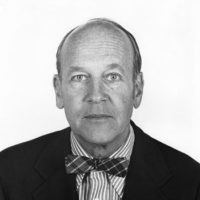
Joseph H. Burchenal
Memorial Hospital for Cancer and Allied Diseases
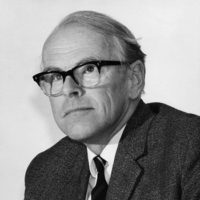
Denis Burkitt
Medical Research Council

Paul P. Carbone
National Cancer Institute, National Institutes of Health
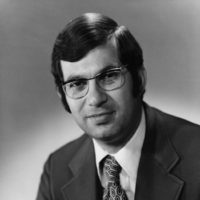
Vincent T. DeVita Jr.
National Cancer Institute, National Institutes of Health
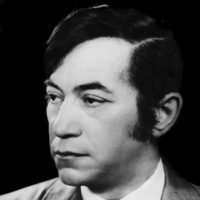
Isaac Djerassi
Mercy Catholic Medical Center

Emil Frei III
Children’s Cancer Research Foundation
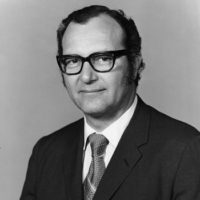
Emil J. Freireich
University of Texas MD Anderson Cancer Center
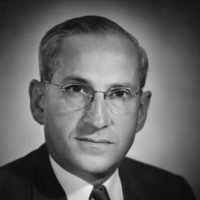
Roy Hertz
New York Medical College
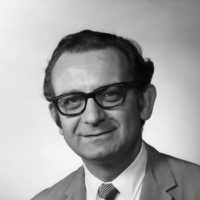
James F. Holland
Roswell Park Memorial Institute

Edmund Klein
Roswell Park Memorial Institute
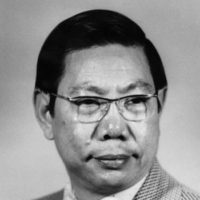
Min Chiu Li
Nassau Hospital
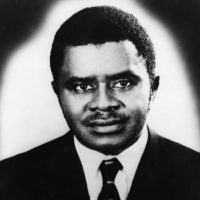
V. Anomah Ngu
University Centre of Health Sciences
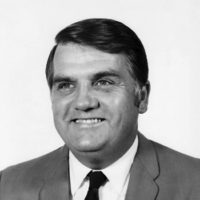
Donald Pinkel
St. Jude Children’s Research Hospital
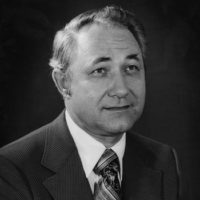
Eugene J. Van Scott
Temple University
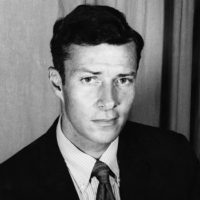
John L. Ziegler
Uganda Cancer Institute
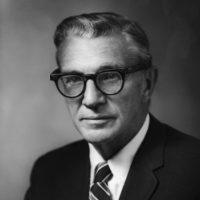
C. Gordon Zubrod
National Cancer Institute, National Institutes of Health
For contributions to the successful chemotherapeutic treatment of gestational choriocarcinoma.
Min Chiu Li
Dr. Li (with Dr. Roy Hertz) in 1956 was the first to demonstrate the first chemical cure of gestational choriocarcinoma resulting from pregnancy, by use of a drug—methotrexate.
Choriocarcinoma may take two forms—gestational, originating in the tissue that would normally be a consitituent of the placenta, and non-gestational—i.e., that originating in the sexual glands of both sexes. Both types, when untreated, kill 90 percent of their victims.
Both types of tumors secrete a hormone that can be measured. Dr. Li and associates utilized techniques for so measuring secretion of hormone as an index of tumor response to methotrexate. This enabled them to detect whether or not the cure was complete.
As a result, in 1961, Dr. Li and associates were able to initiate an improvement in the earlier treatment of gestational choriocarcinoma by using actinomycin D against those cases which had resisted treatment by methotrexate alone. The two drugs, later used sequentially by Dr. Li and other investigators, resulted in a 75 to 85 percent, 5 to 10 year cure rate, out of 500 patients so treated during the last decade.
The contributions of Dr. Li thus stand as an important landmark in cancer chemotherapy.
For identifying Burkitt’s tumor and developing a successful chemotherapeutic treatment.
Roy Hertz
Roy Hertz has treated large numbers of patients, in a study over a period of 20 years, for gestational choriocarcinoma, a highly malignant cancer which originates in tissue which is normally a constituent of the placenta.
Roy Hertz and Min Chiu Li were the first to demonstrate a complete control, by drugs alone, of gestational choriocarcinoma, resulting in the high five-year cure rate of over 90 percent among those patients who were treated within the first four months of the onset of the disease, and of 70 percent among all of the patients whose disease had already metastasized. The drugs which brought about these results were methotrexate and actinomycin D, used either individually or sequentially.
Before Roy Hertz’s method of treatment with drugs, victims of choriocarcinoma had a survival time of only a few months to a year from the onset of the cancer. Now, as a result of the work of Roy Hertz (and Dr. Li), 90 percent can be saved when treated soon enough. Furthermore, drug treatment has obviated the need of hysterectomies in most women afflicted with this cancer, and many women successfully treated have subsequently had normal pregnancies, impossible prior to the advent of drug therapy.
Seven regional centers, originally set up by Roy Hertz in 1965 for the treatment of choriocarcinoma, remain in existence. They have consistently confirmed, in hundreds of cases over the past seven years, the findings of the original study, and continue to achieve successful cures.
Denis Burkitt
In 1957, Denis Burkitt, a British surgeon working in East Africa, was the first to recognize that tumors appearing in characteristic sites and often occurring in the same individuals, were really different manifestations of the same type of tumor.
The surgical treatment of the disease was highly unsatisfactory and no radiotherapy was available in East Africa.
In 1961, his early treatment with chemotherapy was remarkably successful and led to the elaboration of a number of chemotherapeutic programs for the treatment of the disease. Burkitt himself participated in the development of effective chemotherapy for this tumor until 1966.
It was his recognition and clear description of the tumor which led to its use as a model for the development of other chemotherapeutic regimens for Burkitt’s tumor, and the extrapolation of information gained in those studies to other kinds of cancer.
Denis Burkitt’s work also brought a stimulus to leukemia chemotherapy and to studies of host defense mechanisms in cancer, and to the possible causation of human cancer by viruses.
Joseph Burchenal
In 1960, Dr. Burchenal visited East Africa to investigate the possibility of initiating a treatment program in liver cancer. During the trip he became aware of Burkitt’s tumor and promptly recognized its potential importance therapeutically as a “stalking horse” for other types of neoplastic disease, particularly acute leukemia.
It was he who stimulated and guided the early chemotherapeutic trials of Burkitt’s tumor and was thus responsible for the ultimate observation that long-term survivals free of disease were possible.
Dr. Burchenal has persistently emphasized the parallels between Burkitt’s tumor and acute leukemia. His lifelong dedication to leukemia research has contributed substantially to the development of more effective therapies, and potential long-term survivals for patients with acute leukemia.
V. Anomah Ngu
Dr. Ngu, a professor of surgery formerly working in the University College Hospital, Ibadan, Nigeria, recognized the importance of the identification of Burkitt’s tumor and its applicability to a similar group of patients being observed in West Africa.
In 1961, Dr. Ngu and his colleagues began to study the influence on Burkitt’s tumor of various chemotherapeutic agents and treated more than 400 patients. The results were complete regression in over 90 percent of such patients. Over 40 percent in his series have survived five years, and some over ten years. Recurrences after two years are rare and are exceptional after three years in some series.
Before Dr. Ngu’s programs, few patients with Burkitt’s tumor survived five years. Since his success with Burkitt’s tumor, chemotherapeutic cancer centers have been established in other parts of Africa, including small mission hospitals in Nigeria which have also been able to treat Burkitt’s tumor successfully.
John Ziegler
Dr. Ziegler, a senior investigator for the National Cancer Institute, has spent the last five years directing the Uganda Cancer Institute, Kampala, Uganda, Africa, leading the fight there against Burkitt’s tumor, a cancer prevalent in Africa, which manifests itself especially in the jaw, eyes, ovaries, and kidneys of African children.
During this period, in a trial initiated by Dr. Ziegler, more than 200 patients with Burkitt’s tumor were treated with Cytoxan intravenously, resulting in remission in 90 percent of cases after a single dose. Vincristine, methotrexate, cytosine arabinoside, and multiple doses of Cytoxan extended the remission for long periods.
Of those in remission, there is now a 67 percent five-year survival rate. Before the development of combination chemotherapy, essentially no patients survived five years.
In addition to chemotherapy, BCG immunotherapy is now being used to stimulate immunological responses against the tumor. Preliminary results are encouraging, and the trial is being continued.
Research into Burkitt’s lymphoma has yielded important information applicable to the chemical and immunological treatment and control of other types of cancer as well.
For contributions concerning the treatment of premalignant and malignant cancers of the skin.
Edmund Klein
Edmund Klein pioneered the development of local chemotherapy of tumors of the skin as a new treatment modality in over 500 patients, with an aggregate of more than 15,000 neoplastic lesions, and observation periods in excess of five years. He adapted known general systemic anticancer chemicals for the eradication of premalignant and superficial malignant tumors of the skin, which resulted in a cure rate of up to 95 percent in these patients. He was responsible, therefore, for an important new therapeutic weapon, particularly for those skin cancers which were so situated that they could not be treated effectively by surgery or radiotherapy.
Through Edmund Klein’s method of topical application, healing of the skin cancers usually occurs with no scarring, and normal tissue is left unharmed. This treatment has been successful even against some basal cell and squamous cell carcinomas.
Edmund Klein expanded his studies to demonstrate that immunologic factors could be manipulated to control malignant disease in animals and in man. His observations have pointed the way to the justification for great expansion of immunotherapy alone, or in combination with chemotherapy in the treatment of cancer.
Edmund Klein’s pioneering and persistent efforts have extended, to an important degree, the therapeutic attack on cancer.
For contributions to combination chemotherapy in the treatment of lymphoma and acute leukemia in adults.
Emil Frei III
During the past 17 years, Emil Frei has made important contributions to clinical cancer chemotherapy. These include the introduction of several new effective chemicals, and especially the development and use of combination of chemotherapy. He has been particularly responsible for rational development in cancer chemotherapy through clinical investigation, clinical pharmacologic, and cytokinetic approaches. In addition to the leadership in such investigations within the National Cancer Institute, Emil Frei developed and led, as chairman, two major multi-institute cancer chemotherapy groups, which made possible far more rapid progress in chemotherapeutic trials in this country and in Europe.
The more effective use of established agents, and the introduction of new chemicals and combination chemotherapy in Emil Frei’s studies continued at the MD Anderson Hospital, have resulted in a marked increase in the remission rate, duration of remission and survival in acute leukemia in children and adults and in patients with disseminated Hodgkin’s disease.
Thus, in children with acute leukemia, a 90 percent complete remission rate, a 36-month median duration at remission, and a 25 to 35 percent survival rate at five years has been achieved.
In disseminated Hodgkin’s disease, an 80 percent complete remission rate has been achieved, and 40 percent of such patients are without evidence of cancer after four years.
More recently, progress by combination chemotherapy along the above lines is being achieved through Emil Frei’s efforts in patients with metastatic cancer of other types. These include response rates exceeding 50 percent in patients with breast cancer; 40 percent in patients with soft tissue sarcoma; and 20 percent in patients with malignant melanoma.
Emil Frei’s pioneering role in cancer chemotherapy is founded on his skill as a physician, his appreciation of the importance of basic research in clinical pharmacology, and his qualities of leadership.
Emil Freireich
At the National Cancer Institute, from 1955 to 1965, Emil Freireich participated with Emil Frei III in the treatment of 477 acute leukemic children, with methods of combined chemotherapy. This multiple drug combination regimen, consisting of vincristine, methotrexate, mercaptopurine and prednisone (POMP), induced a 90 percent complete remission rate. Further development of such treatment has led to five-year survival rates of 30 percent in childhood lymphoblastic leukemia, in studies from 1962 to the present.
In adult leukemia, in studies with Emil Frei at MD Anderson Hospital from 1965 to the present, Emil Freireich has participated in the treatment, with combination therapy, of 300 men and women with acute leukemia. For these patients, a program of Cytoxan, oncovan, arabinoside, and prednisone (COAP) was developed. As a result, in the most recent studies, about 50 percent of such adult patients achieved complete remission, with average duration of remission of one year. The overall prolongation of survival for patients who do respond is about a year; for 25 percent of such patients, life is prolonged two years.
In supportive care, Emil Freireich provides a protective isolation of the patient from infectious agents in the environment, thus permitting more aggressive and intensive anti-leukemic therapy. In addition, he has been a pioneer in the development of the blood cell separator, which permits the use of platelet and white cell transfusions to patients whose own defenses are inadequate against infection or hemorrhaging.
Emil Freireich’s zeal and innovative skill in perfecting supportive therapy have made chemotherapy a much more effective treatment.
For contributions to combination chemotherapy in the treatment of acute leukemia in children.
James Holland
James Holland, as chairman of Acute Leukemia Group B—a cooperative, international group of physicians and scientists—has provided the outstanding leadership for the Group’s investigations which has resulted in increasing the life expectancy of children with acute lymphocytic leukemia.
Since 1956, the Group has studied 1538 patients with this disease. In 1956, only 30 percent of children lived one year from the onset of their disease. Now, 90 percent do.
In 1956, only 4 percent lived four years from the start of their disease. Now, in 1972, more than 40 percent of such children live as long as four years.
In 1966, out of 267 children who started treatment then, 27 percent have survived five years.
In another group of 55 children treated in 1966, nine are still alive and well, without evidence of disease, four years or more after completion of the last drug treatment.
In one segment of a program started in 1968, 33 children were treated in a new regimen of combination therapy. Twenty-nine have survived since 1968, and the projected probable survival rate among them appears to be the most favorable in the Group’s experience to date.
Dr. Holland’s success in leadership is based upon his great clinical skill, and his outstanding ability in clinical investigation.
Donald Pinkel
In 1962, Dr. Pinkel and associates initiated at St. Jude a program of therapy of acute lymphocytic leukemia for the children at that hospital.
In the course of the decade from 1962 to the present, seven successive studies were designed, each an improvement over its predecessor, during which time a total of 346 children were treated for the disease.
Dr. Pinkel’s method includes prolonged multiple drug treatment for two or three years, with prednisone and vincristine, to induce remission of the disease; and methotrexate, mercaptopurine, and Cytoxan, to continue subsequent disease-free survival. Cobalt radiation is administered to the head and spine early in remission, to prevent the development of central nervous system leukemia.
Dr. Pinkel has demonstrated that such treatment can be carried out with minimal and even no hospitalization, and can result in the prospect of long survival for a substantial proportion of the children.
Recent studies indicate that 50 to 55 percent out of 80 children treated at St. Jude from 1967 to 1970 by his method are in continuous complete remission.
These studies represent important progress in the treatment of children with acute leukemia.
For contributions to combination chemotherapy in the treatment of Hodgkin’s disease.
Paul Carbone
Dr. Carbone has developed a treatment for patients with Hodgkin’s disease, a specialized form of cancer affecting the lymph nodes, spleen, liver, lungs and bone marrow, in various stages of its spread. Through the combined use of nitrogen mustard, vincristine, procarbazine, and prednisone (MOPP), plus other forms of therapy—i.e., intermittent treatment to allow for host recovery, and prolonging the induction treatment for six months—Dr. Carbone has been successful in keeping 70 percent of the patients alive for five years or more; and 40 percent free of disease for five years. This treatment has been extended to over 250 patients at the National Cancer Institute, and several thousand around the world.
Without Dr. Carbone’s application of combination therapy in Hodgkin’s disease, most of the patients he treated would not ordinarily have lived more than two years after diagnosis. His accomplishment has given great impetus to the use of combination chemotherapy in all other forms of cancer.
Vincent DeVita, Jr.
Dr. DeVita defined the infectious complications associated with Hodgkin’s disease, explored the cell cycle characteristics of human tumors which might affect their responsiveness to drugs, and expanded greatly the value of chemotherapy.
Out of a group of 100 patients with advanced Hodgkin’s disease who had achieved remission by using vinca alkaloids, alkylating agents, prednisone and procarbazine, Dr. DeVita has been successful in keeping about 70 percent of them alive and free of disease after five and six years.
Furthermore, 41 percent out of those who were in complete remission have remained continuously free of disease—without treatment—for up to six years.
Dr. DeVita’s major contribution has been the development of four-drug therapy for advanced Hodgkin’s disease. His methods have brought about a prolongation of remission never before achieved.
For contributions to topical chemotherapy in the treatment of mycosis fungoides.
Eugene Van Scott
Dr. Van Scott has demonstrated that topical chemotherapy can produce disease-free survivals, now extending beyond two years, in patients with mycosis fungoides—an especially virulent form of cancer beginning in the skin—when the disease is limited to the skin and treatment is begun prior to lymph node involvement.
In such cases, Dr. Van Scott has achieved regression of the disease in 37 patients—about 50 percent out of 76 treated during the past four years. Disease-free survival for a period beyond two years has now been realized in 13 patients out of the 37 who achieved remission. The remaining patients have not been on treatment sufficiently long to arrive at two-year remissions.
Early diagnosis and treatment by topical chemotherapy can prevent spread of mycosis fungoides from the skin to the lymph nodes. Once the disease has reached the lymph nodes, it is almost always fatal.
Dr. Van Scott has developed a treatment, when the disease is still limited to the skin, whereby he first desensitizes the patient, and then uses nitrogen mustard preparations applied topically to the patient’s body daily or three days a week, until the disease has disappeared—sometimes for as long as two years.
Dr. Van Scott’s work represents early evidence of an important improvement in the treatment of mycosis fungoides.
For contributions to the supportive care, by platelet transfusion, of patients receiving intensive chemotherapy.
Isaac Djerassi
Soon after the era of chemotherapy of cancer was inaugurated in 1947, two great needs were recognized: control of bleeding, and of infection secondary to thrombocytopenia and leukopenia, as part of bone marrow failure induced either by therapy or by replacement of the bone marrow by cancer.
To replace the blood elements lacking in leukemia and other cancer patients, supportive care was initiated whereby platelets and white cells were separated from the blood so they could be transfused separately.
Dr. Djerassi perfected and extended these techniques, and during the past 18 years has treated over 1000 patients with platelet transfusions. The availability of platelet transfusions made possible the use of intensive drug combination therapy and much larger doses of methotrexate. He obtained striking responses consistently with this approach, in patients with tumors previously considered unresponsive to folic acid antagonists, including resistant acute leukemia, lymphosarcoma, and primary lung cancer.
His latest achievement was the perfection of filtration-leukophoresis apparatus which has made white cell replacement comparable to that already achieved for platelets. Without this work the resultant great increase in the effectiveness of chemotherapy of cancer would not have been possible.
For leadership in expanding the frontiers of cancer chemotherapy.
Special Award to C. Gordon Zubrod
Dr. Zubrod has led, since 1955, the national cancer chemotherapy program which is outstanding in the world today. This program accelerated and enlarged the discovery, testing and application of new cancer drugs, and developed methods to cure and control some cancers not effectively treated in the past.
Today more than one million Americans are receiving treatment for cancer. About 340,000 people will die this year from this disease which is the second largest cause of death in the United States. The evaluation of cancer chemotherapy is too complex to be successfully conducted by only one investigator or institution. The advances in the use of anticancer drugs are the result of an intensive coordinated effort of many basic scientists, contracting laboratories, pharmaceutical companies and clinical investigators.
As Intramural Director of the National Cancer Institute, Chairman of the Leukemia Task Force, Scientific Director of Chemotherapy and, now Director, Division of Cancer Treatment of the National Cancer Institute, Dr. Zubrod has creatively guided cancer chemotherapy closer to the cure of leukemia and Hodgkin’s disease. He has helped gain for cancer chemotherapy its full acceptance as an important tool in the control of all forms of cancer.
Dr. Zubrod has provided the administrative leadership that focused the efforts of hundreds of investigators and created an effective national cancer chemotherapy program. This program has been further expanded through the recent scientific agreement between the Soviet Union and the United States.
For Dr. Zubrod’s dedicated and persistent leadership in expanding the frontiers of cancer chemotherapy, this Albert Lasker Special Award is given.
Award presentation by Mary Lasker
Lasker Award winners, ladies and gentlemen, friends.
We are here to honor the pioneers in cancer chemotherapy.
Except for peace, the most passionately desired event of this century is a chemical cure for cancer. With radiation and surgery, only 40 percent of all cancer patients now attain five-year cures.
While no one, overall chemical cure for all types of cancer is yet available, chemical cures have been found for at least three types of cancer—choriocarcinoma, Wilms' tumor and cancers of the skin. Prolonged survivals have recently been attained in acute lymphatic leukemia and Hodgkin's disease and Burkitt's tumor. Before combination chemotherapy, lives were cut tragically short.
In 1963, the Lasker Awards honored Dr. Charles Huggins for his discovery in the early 1940s of the usefulness of estrogens against cancer of the prostate. In 1966, we honored Dr. Sidney Farber, our chairman here today, for the first use of drugs against leukemia and for his outstanding contributions in the cure of Wilms' tumor. In Wilms' tumor, he had shown that a large percentage of patients can obtain five-year cures with actinomycin D, and many are living for much longer periods of time.
Today, some of the men we are honoring have attained five-year cures for other kinds of cancer.
Other winners have prolonged productive survival of patients who are now awaiting discoveries which will provide complete cures.
In addition to the exciting and dedicated work of the men honored today, the hope for chemical cures of major cancers is heightened by the fact that at least 44 different compounds provide remissions, long or short, in about 29 types of cancer.
The major types of cancer have, by no means, been fully explored with combination chemotherapy as yet.
Therefore, we hope that the work of these Award winners will hasten the more complete exploration of drug combinations, and immunotherapy, against all forms of this disease.
Final success against cancer will depend on the clear, determined, continuing expression of the national will.
This nation's determination and competency has been demonstrated in the development of atomic energy, and in the conquest of space. There is no reason "inner space," including cancer in humans, cannot be conquered, too, and the prime of life prolonged.
President Nixon warmly supports a program for the conquest of cancer.
So, if our national will is sufficiently expressed to sustain the cancer research workers with money and enthusiasm, the chemical and immunological answers for many more types of cancer can be found in the next few years—thanks to the inspiring work and dedication of today's Award winners. Let's applaud them! Thank you.
Special remarks by Paul Rogers
I'm delighted to be with you today. The Lasker Foundation Medical Research Awards are among the highest of honors bestowed on the men and women in medicine and science, and today's recipients can be assured that they have gained the respect and esteem of their peers and of those of us in public life that are charged with responsibilities in the health field.
The record is clear that no lay person has devoted more of her life, talents, and resources to the health of man than has Mary Lasker. And those of us who know Mary Lasker know that her work is far from finished.
We can all agree that 1971 was cancer's most important year in the history of this country, for it signified a new beginning and a national commitment to conquer cancer.
The debate over the proper structure of the federal cancer research efforts is now behind us.
A new emphasis on targeted research, a new accountability to the Congress and the American public, and a new responsibility to apply findings of research quickly to those in need, is the mandate to the National Cancer Institute in the National Institutes of Health. With this new emphasis on needed target research, the Congress will insist upon the proper balance with basic research. Basic research is a major key in improving health care in America.
The provisions of the National Cancer Act make the intent of Congress clear: Discoveries that scientists make in their laboratories must be converted more quickly into treatment for cancer victims. Dr. Letton's recent statement that the number of cancer patients saved has increased from 33 percent to 60 percent is encouraging. But what is disturbing is his statement, that if our best forms of therapy and early detection were in widespread use, our five-year survival rate no longer would be 50 percent—it would be just under two-thirds. This potential will surely increase dramatically with the certain advent of new discoveries and refinements of traditional therapy and diagnosis. Today's challenge is to ensure that research results such as the findings of these excellent men honored today are brought swiftly from the laboratory to the day-to-day practice of medicine in every community. The gap between discovery and application must be closed. If this gap is not closed, then our legislative efforts will have been useless, our intent perverted, and the increased mission of the National Cancer Institute will have failed.
Eighty percent of all cancer patients are first seen in community hospitals, which receive input from our major research centers haphazardly and with no clear channel of communication. Indeed, a cancer patient can live two blocks from the Sloan-Kettering Institute and be denied the fruits of its research through the lack of dissemination of information on diagnosis and therapy. This is an irresponsible waste of national resources of knowledge and lives—and it must not continue.
I'm happy to report to you that changes are in view. Dr. Rauscher advises me that the National Cancer Program Plan mandated by the Cancer Institute has embarked on a plan to establish twenty clinics throughout the United States for the early detection of breast cancer. These clinics will be co-funded in February 1973 with the National Cancer Society, and will be fully operational by early 1974. Eight of the fifteen comprehensive cancer centers mandated under the Act will be operational prior to the end of 1973. All fifteen will be operational by mid-1974. These are the kinds of action that must be initiated if the intent of the Congress is fulfilled and if the American people are truly to reap the rewards of this nation's cancer efforts.
This type of planning—planning for research, for treatment and control programs, for location, for direction—is what is sadly lacking in the entire health area. Many of the criticisms of the National Cancer Institute voiced during the last year's hearings were valid—there was a lack of direction for application of knowledge, a lack of proper planning, and a lack of action for people. But the problems with our cancer program were merely representative of the total problem with health programs in this country. And this larger problem will not be solved by further fragmenting health priorities with a rumored HEW health revenue-sharing proposal that carries a catchy public relations title, but which, in fact, would spell the death knell of carefully designed health programs to conquer the major diseases of this nation. The first step in solving the health problems of this country is to consolidate our decision-making process and focus total attention on the health of America. This requires establishment of a separate Department of Health.
In 1953, when HEW was established, the Department had a budget of approximately two billion dollars. Ten years later, that figure stood at six billion. Today, the appropriation for HEW sent to the President exceeded 30 billion dollars. As the President stated in a recent interview, "HEW is too far, too bloated." I agree with the President. HEW is too large for any one Secretary—no matter how competent—to handle and make proper decisions. We must have a weight-reducing program for HEW, and a first reduction would be to create a separate Department of Health which will bring about better health programs for the nation. A Secretary of Health who can devote all of his attention and time to the health of our people will allow health programs to be run by health experts, and not the accountants at the Office of Management and Budget. The President deserves to have a health expert at his table.
I see a great future for improved cancer research and treatment. I see a great future for the status of health care in this country, with increased emphasis on health in the 1970s—with better planning and administration, more adequate research, and perhaps more importantly, the goal of getting our knowledge applied quickly, to people.
I congratulate each of today's recipients. I am honored to have been here.
Thank you.
